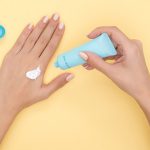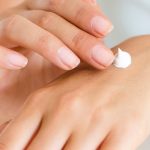Children love to play hard, and as a result, they often get scars. As a kid, a scar may be a symbol of strength and bravery. But what about as you get older? Maybe you’ve received scars from surgery, an accident or even acne. Although scars are a natural result of the body’s healing process, you may wish they would disappear.
Fortunately, there are ways to help minimize the appearance of scars you can do at home such as keeping the wound clean, applying petroleum jelly and keeping a fresh bandage over the wound as it heals. Keep reading to learn more about scars and how to effectively treat them.
What is a scar and why do we get them?
Scars are the natural result of the skin and tissue trying to repair a wound. A scar can form from almost any kind of cut, scratch, burn, disease, skin condition or surgery. Only very minor incidents will not cause scarring.
If the dermis, or deep layer of skin, has been damaged, new collagen fibers will begin to form. Think of it as the skin stitching itself back together. This stitching, or mending, of the skin will leave a visible mark once it is completely healed. These visible marks, or scars, let you know that your body has done its job at helping to restore your skin as best as it can.
What are the different types of scars?
Every wound heals a little bit differently. Therefore, there are different types of scars due to the amount of collagen that the body produces to heal the wound. Many scars will appear flat but paler than the natural tone of your skin. When the body creates too much collagen at the time of mending the wound, the scar will be raised. This kind of scar is called hypertrophic or keloid. Other scars appear to be sunken into the skin or pitted. These usually result from acne and are known as acne scars. Contracture scars occur when you have been burned. This type of scar is tightened skin and can be quite deep, affecting your muscles and nerves.
Wound care and how to minimize scars
There are several ways to approach treating scars. Most importantly, you should know how to treat the wound as it is healing, and as the scar is forming. Here, we share proper wound care and how to minimize scars.
1. Keep it clean
First of all, treatment of the wound must begin soon after it occurs.
As soon as you get a cut on your skin, with clean hands, cleanse it with clean (preferably sterile) water or antiseptic saline solution. This will remove bacteria on the surface of your skin that could cause an infection later on. It also reduces the risk of scarring.
Pat your skin dry by dabbing it with a towel or paper towels but do not rub it because it could lead to more irritation and potential micro-tears in the skin.
Wounds need to be cleaned multiple times a day with soap and water to remove any bacteria or dirt that may prevent it from healing well. However, be sure not to clean the wound too much as your wound also need some healthy bacteria to help the process.
If you notice increased redness or swollen skin around the wound, this can be a sign of infection. Infection is also indicated by increased pain, warmth, pus draining from the wound, etc. If any signs of infection are present, see a doctor immediately.
2. Keep it moist
Apply ointment or hydrogel to keep the skin around the injury hydrated and protected, so it does not look or feel dry. This will help prevent cracking of the scab as it heals.
You could also cover it with a small amount of antibiotic ointment to help the healing process. While antibiotic ointment is not always recommended, it can help minimize scarring by keeping the wound moist and reducing bacterial contamination.
A thin coat of petroleum jelly may also protect it. Petroleum jelly is a skin protectant that will keep your skin’s natural moisture to help prevent scarring and infection.
Other wound gels you could use to cover your wound include honey, aloe vera gel or iodine solution.
Aloe vera gel has properties that calm the skin, which protects exposed tissues while healing takes place. Because aloe vera gel does not contain enzymes to kill bacteria, you cannot use it as a primary treatment for wounds. However, you can use it as a secondary treatment to disinfect the wound and protect it from infection. This also goes for petroleum jelly and ointments like bacitracin or Aquaphor.
Iodine solution is often used as an antiseptic to cleanse wounds or disinfect tools, especially when tissue dies. Iodine solution can also help prevent infection and scarring after surgery.
You can also ask your doctor for the best advice for keeping the wound moist.
3. Keep it covered
If your wound is exposed to the open air for a prolonged period, it’s a good idea to cover it with gauze or a band-aid when you are not cleaning or dressing it. This will help prevent bacteria from entering and infecting the wound.
Besides a band-aid or gauze, you could also cover it with silicone gel or hydrogel sheets.
Silicone gel sheets are made of silicones, rubber-like materials that feature many useful properties. Because they are waterproof, the sheets don’t stick to wounds and won’t come off when exposed to perspiration. Most can be worn for several days before they must be removed and discarded.
Hydrogel sheets are made of polyacrylates which are the same materials used for diapers. It is designed to protect and absorb fluids.
4. Change the dressing daily
Changing the dressing on your wound daily will not only help it heal faster. It helps prevent infection and allows you to track the healing process. If there is no sign of healing, it is a good idea to see your doctor.
How can you get rid of old scars?
If you have had a scar that has not faded over time and you’ve lost hope on it ever fading, don’t give up yet! There are treatments that you can try to help fade old scars, many that can be done in the comfort of your own home.
Silicone sheeting or gel has proven to be an effective treatment that can help alter the appearance of hypertrophic and keloid scars. Onion extract has been another effective remedy that can soften the scar and help improve the texture and discoloration.
Chemical exfoliators are helpful in the fact that they can remove outer layers of dead skin, which can help to smooth the appearance of scars. Any of these treatments can help reduce the appearance of old scars but may not get rid of them completely. If you wish to ensure that your scars are entirely gone, you may consider speaking to a dermatologist or a plastic surgeon.
Microdermabrasion treatment will take away the skin’s surface where scarring is visible and can help to take away any irregularities. Filler injections can be used for sunken or pitted scars to raise the skin. In some cases, surgery may be considered, depending on the severity of the scarring. This will not remove the scar altogether, but it can help to alter the appearance.
When to see a dermatologist
Scars are as unique as people. They heal differently and appear different from others. No one solution will remove or reduce scars. If you are concerned or continually embarrassed by your scarring, it is best to make an appointment with your dermatologist.
Columbia Skin Clinic treats patients at three conveniently located Midland’s locations. Contact us to make an appointment today.






